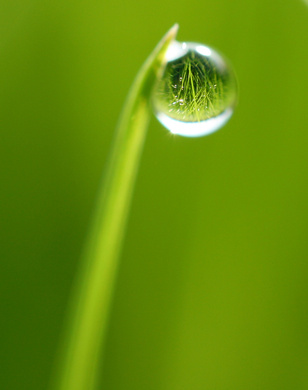During dry and hot weather the need to water your green properly can't be over emphasised. Although it can be tempting to let the green burn to achieve speed, this can turn to disaster and cause the green to fail later in the season.


During dry and hot weather the need to water your green properly can't be over emphasised. Although it can be tempting to let the green burn to achieve speed, this can turn to disaster and cause the green to fail later in the season.

Sometimes we over complicate things in greenkeeping. Checking off the points on this short list of things to change in your programme will help a great deal to simplify your life.
A common question is “How much does it cost to water a bowling green for a season?”
Answer: a lot less for a performance bowling green than one in the throes of a traditional maintenance program.
It surprises me that clubs are surprised at the little surprises they get when the water bill comes in.
How can you be surprised that you used more water this year when you added 5 or 10 tonnes of sand to the green last autumn?
Many greens are already unmanageable in a normal (UK) summer due to excessive water requirements, localised dry patch and impermeable thatch; in a drought scenario its unlikely that there is any amount of water that would suffice.
This is because most of the water applied to poorly maintained greens is wasted to evaporation, run off and/or leaching.
Thick thatch holds water at the surface like a sponge, until of course LDP sets in, then it becomes akin to concrete and most water is lost to run off.
LDP causes soil particles to become hydrophobic, shedding any water that gets through the thatch to the macro-pores in the soil and away to the drains.
Performance greens can be watered cheaply and effectively because they only need enough to keep them alive during prolonged dry periods and can mostly take care of themselves in the normal course of a British Summer.
In many cases there is no need for anything more sophisticated than a large holding tank (the bigger the better) a simple pump and a 19mm hose to hand water hot spots on the green. This is much more effective than pop up sprinklers.
Water requirements and routines are given in more detail here.
Bowling green irrigation is one of the areas of bowling green maintenance that raises the most questions.
On the face of it, this appears to be a simple subject; install sprinklers (watering systems), switch them on when it’s dry and the green gets evenly watered and everybody’s happy!
In reality it is a minefield of decisions including; best system design for your green, water storage, watering schedules, when, how and how much to water, green speed, disease, dry patch, thatch etc.
I have assembled some more in-depth information regarding the watering of bowling greens here.
If you need any help with this subject please feel free to drop me a line directly.
You can read in detail about how bowls green condition declines here.
The answer to achieving a High Performance Bowls Green is here.